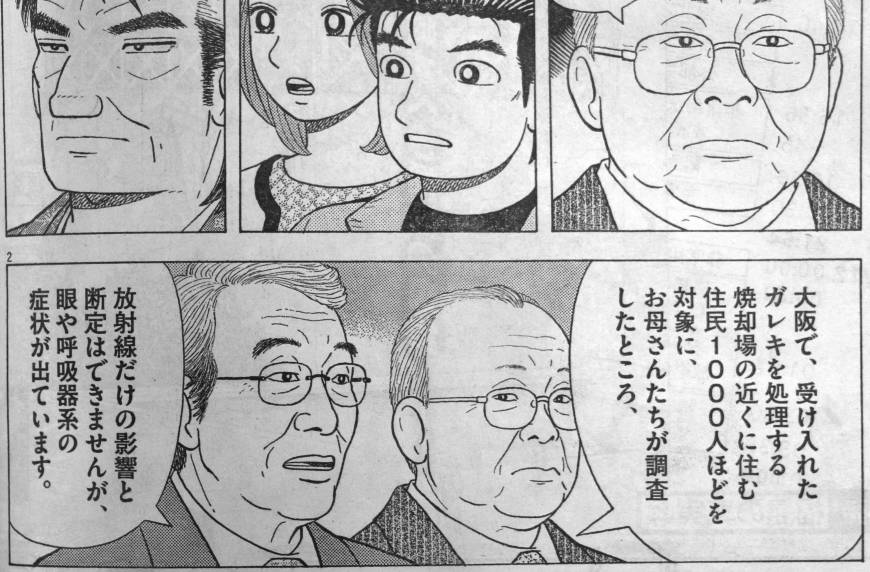Over the past few weeks, the popular Japanese cooking manga Oishinbo has come under fire from residents and government officials of Fukushima Prefecture, who say that it inaccurately depicts the effect of radiation exposure on visitors to the nuclear plant there that was damaged by a 2011 earthquake and tsunami.
Characters in the series written by Tetsu Kariya, which appears in Big Comic Spirits magazine, first visited the nuclear plant in the April 28 issue. Some of them, including lead character Shiro Yamaoka, later developed unusual nosebleeds and extreme exhaustion. Yamaoka and his journalist colleagues also met a character based on Katsutaka Idogawa, the real-life former mayor of the nearby town of Futaba who has voiced concerns about the health effects of radiation and resigned in frustration last year. In the manga, Idogawa tells the journalists that he has been “unbearably sick” since the accident and that “[m]any Fukushima residents have been afflicted by the same symptoms.”
After the April 28 issue of Big Comic Spirits appeared, Fukushima residents concerned about possible negative effects on regional agriculture and tourism sharply criticized Kariya and the magazine’s publisher Shogakukan. On Twitter, someone who claimed to be a resident of the Fukushima town of Koriyama said that they had “never suffered such symptoms over the past three years” and received over 13,000 retweets in a few days. Nevertheless, the publisher stood by Kariya, pointing out that he had done meticulous research and that the manga also fairly represented the findings of experts who say there is no proven connection between radiation exposure and the unexplained symptoms.
After the nuclear plant storyline continued in this week’s episode of Oishinbo, however, local governments joined in the criticism. On Monday Fukushima Prefecture issued a statement that “no health problems in the prefecture have been linked to leaked radiation and that the manga would only serve to fan unfounded fears both at home and abroad.” Later Osaka Prefecture also made its own statement, since the manga mentioned supposed health effects to people there living near an incinerator where tsunami debris was burned.
For its part, Shogakukan reiterated that Oishinbo has made no definitive claim about the cause of its characters’ symptoms in the still-unfolding storyline. The publisher says an article to appear on its website next week will “summariz[e] the opinions of various experts and readers, including critics.”
We need your help to keep fighting for the right to read! Help support CBLDF’s important First Amendment work by visiting the Rewards Zone, making a donation, or becoming a member of CBLDF!
Contributing Editor Maren Williams is a reference librarian who enjoys free speech and rescue dogs.
